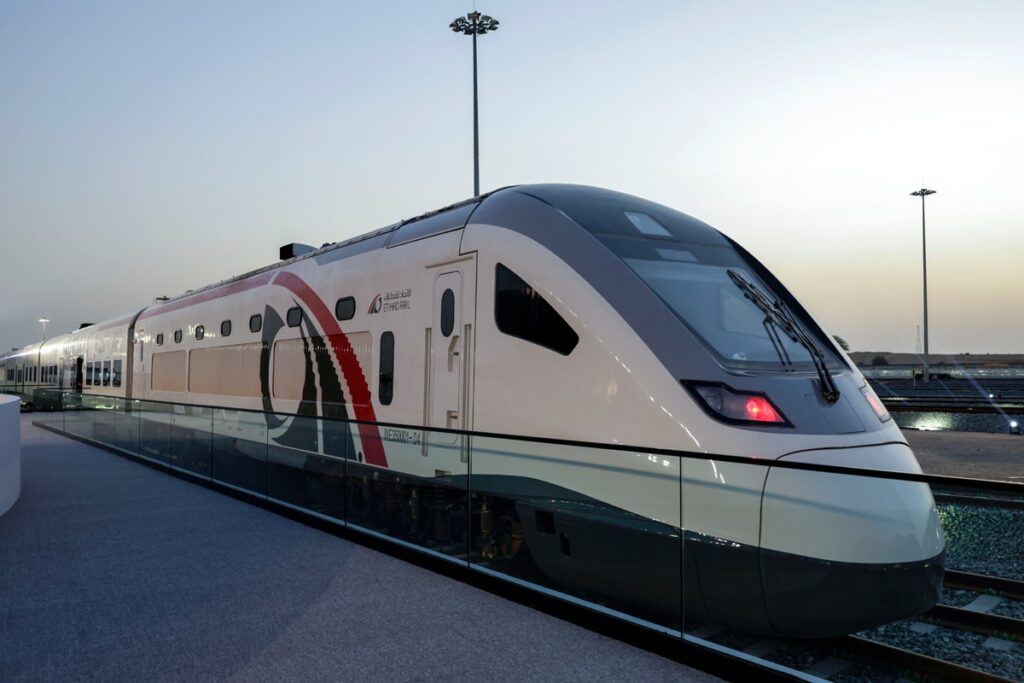The Etihad Train is one of the most ambitious and transformative infrastructure projects currently underway in the United Arab Emirates (UAE). Designed to connect major cities, ports, and industrial hubs across the UAE and eventually neighboring countries, the Etihad Train promises to change the way people and goods move in the region.
This article explores everything you need to know about the Etihad Train, including its background, development, benefits, and future impact on the UAE and the Gulf Cooperation Council (GCC) region.
What is the Etihad Train?
The Etihad Train is a planned national railway network in the UAE aimed at linking major cities and ports with a modern, efficient, and environmentally friendly rail system. The name “Etihad” means “union” in Arabic, reflecting the train’s goal to unify the country’s transportation infrastructure and promote economic growth.

The project is expected to cover thousands of kilometers of track, connecting key urban centers like Abu Dhabi, Dubai, Sharjah, Ajman, Ras Al Khaimah, Fujairah, and Umm Al Quwain, along with the northern and southern borders.
Background and History of the Etihad Train Project
The idea for the Etihad Train emerged as the UAE’s government recognized the need for a reliable, high-capacity transport system to support its growing economy and population. With increasing urbanization, traffic congestion, and environmental concerns, the country sought a sustainable alternative to road transport.

Announced officially in 2016, the Etihad Rail project (as it is also known) is part of a larger regional rail network envisioned to connect the GCC countries — Saudi Arabia, Oman, Kuwait, Bahrain, Qatar, and the UAE. This network aims to boost trade, travel, and regional integration.
The first phase of the project focused on freight transport, linking key industrial and mining areas in the UAE. Subsequent phases will expand passenger services and integrate with other Gulf rail systems.
Key Features of the Etihad Train
- Extensive Rail Network
The Etihad Train will cover approximately 1,200 kilometers (around 750 miles) within the UAE, making it the country’s largest rail network. It will connect strategic locations such as ports, industrial zones, and urban areas. - Passenger and Freight Services
The network will serve both passenger and freight trains. Freight services are already operational on some sections, transporting materials such as sulfur and granulated rock. Passenger trains are planned to provide fast, safe, and comfortable travel between cities. - Modern Technology and Safety
The Etihad Train will use state-of-the-art technology to ensure safety, reliability, and speed. Automated signaling systems, modern stations, and energy-efficient trains will make it a world-class railway. - Sustainability Focus
A key goal of the Etihad Train is reducing carbon emissions by shifting freight and passenger traffic from road to rail. This will help the UAE meet its environmental targets and support global climate efforts.
Why the Etihad Train is Important for the UAE
Economic Growth
The Etihad Train is expected to boost the UAE’s economy by improving logistics and reducing transportation costs. Efficient rail freight services will support industries like construction, manufacturing, and export.
Traffic and Congestion Relief
With growing urban populations, road traffic congestion is a major challenge in the UAE’s cities. The train will offer a reliable alternative for commuters and cargo, easing the burden on highways.
Job Creation and Skills Development
The construction and operation of the Etihad Train will create thousands of jobs and opportunities for training in engineering, technology, and railway management.
Regional Connectivity
As part of a wider GCC rail network, the Etihad Train will enable seamless cross-border trade and travel, promoting cooperation and integration among Gulf countries.
Current Status and Progress of the Etihad Train
Construction on the Etihad Train began in phases, with the initial segment launched between the Shah and Habshan gas fields and the port of Ruwais. This freight line is already operational and transporting key industrial materials.
Subsequent phases aim to extend the network east west and north south, linking the UAE’s major cities and ports, including the capital Abu Dhabi and the commercial hub Dubai.
Passenger services are planned for completion in later phases, with trains expected to run at speeds up to 220 km/h (about 137 mph), significantly reducing travel time between cities.

Challenges Facing the Etihad Train Project
Despite its promise, the Etihad Train faces several challenges:
- Cost and Funding: Building a modern rail network requires significant investment, which the government and partners must carefully manage.
- Technical Complexity: Constructing railways in desert environments and urban areas demands advanced engineering solutions.
- Coordination: Integrating with neighboring countries’ rail networks requires strong regional cooperation and regulatory alignment.
- Public Awareness: Encouraging citizens and businesses to shift to rail transport requires marketing and trust-building.
Future Outlook: What to Expect from the Etihad Train
The Etihad Train is expected to be fully operational by the late 2020s, with both freight and passenger services running across the UAE. It will:
- Connect the country’s largest cities in less than half the current travel time by road.
- Provide a reliable, comfortable alternative to cars and buses.
- Support the UAE’s vision of sustainable and smart transportation.
- Foster stronger economic ties within the Gulf region.
How the Etihad Train Supports UAE’s Vision 2021 and Beyond
The UAE Vision 2021 focuses on building a diversified and sustainable economy with world-class infrastructure. The Etihad Train project aligns perfectly with this vision by:
- Promoting economic diversification through efficient logistics.
- Enhancing quality of life by reducing travel times and pollution.
- Encouraging technological innovation and infrastructure development.
Conclusion
The Etihad Train stands as a transformative initiative that will shape the future of transportation in the UAE. By offering fast, sustainable, and integrated rail services, it is set to boost economic growth, improve quality of life, and strengthen regional connectivity. While challenges remain, the project’s progress is a clear indicator of the UAE’s commitment to modernizing its infrastructure and leading the Gulf region into a new era of sustainable mobility.
Whether you are a traveler, business owner, or policy enthusiast, the Etihad Train is a story to watch—one that signals the dawn of a new chapter in UAE’s transportation history.
Do follow UAE Stories on Instagram
Read More: Dubai Comedy Festival 2025 Adds Nine New Shows to Its Star-Studded Lineup














